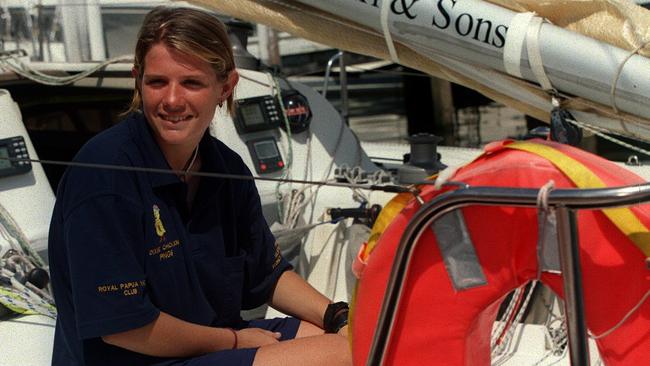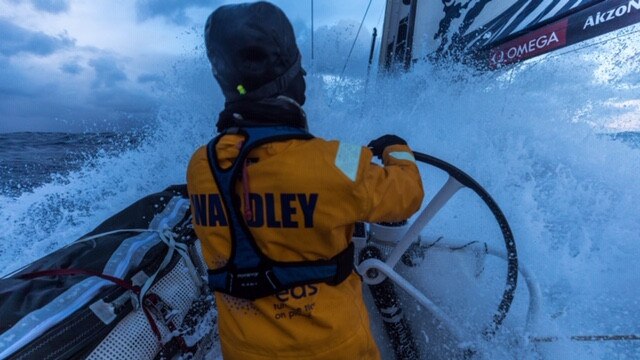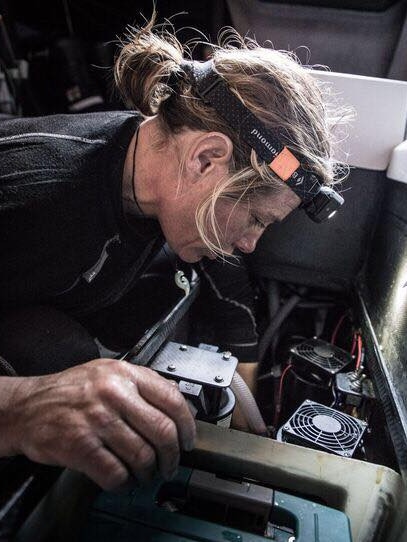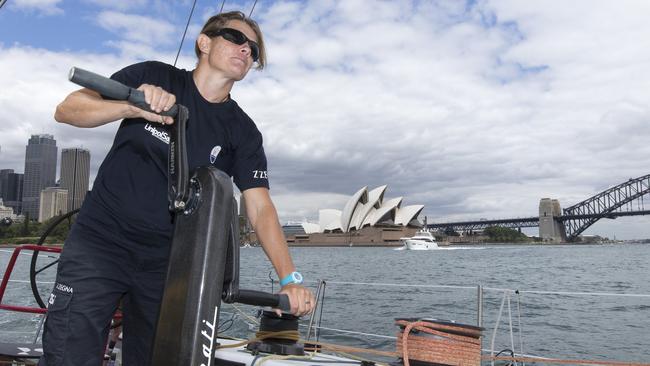Liz Wardley remembers the nightmare of the 1998 Sydney to Hobart
Liz Wardley is now one of the world’s most respected around-the-world sailors. But in 1998 she was a skinny 19-year-old contesting her second Sydney to Hobart in the height of the killer storm.
It was enough to make young skipper Liz Wardley want to go back up on deck to brave cyclonic winds whipped up by the worst storm to ever lash the Sydney to Hobart fleet.
The sound of panic, hysteria and then the words “oh my god, I think someone has gone overboard.”
“It was absolute bedlam,” say Wardley, now one of the world’s most respected around-the-world sailors. But back in 1998 she was just a skinny 19-year-old contesting only her second ever Sydney to Hobart — and her first as skipper.

“What I remember most is the radio, listening to the radio and how people just lost it.
“It was spooky. I kept wondering, if I was in that situation would I be the same? Is there someone who can give them a slap and calm them down?
“I could hear everyone’s fear. There was a conversation going on and suddenly over the top, someone said, someone has gone overboard.
“It was everyone’s worst nightmare.”
Wardley, who this year completed her third Volvo round the world race, isn’t sure who it was she heard fall off their yacht.
A number of sailors went overboard, including British Olympian Glyn Charles, who was on Sword of Orion. His body was never recovered.
The storm exploded over the fleet on the second day of the 1998 race.

When it struck, Wardley, with just one other crew on deck for safety, wrestled to keep the 38-footer Dixie Chicken upright and her crew safe.
Wardley was somewhere in Bass Strait, around 30 nautical miles in and things were seriously scary.
“I told everyone to eat and hydrate as much as possible,” she says.
“At one stage I went down and everyone was huddling together to stay warm. It was freezing.
“There was vomit everywhere, in the bilge, everywhere. Downstairs was a scene of horror.
“On deck you were really concentrating. We were bare poles and still doing seven knots in a 38-footer.
“Our wind gear blew off at 80 knots and that wasn’t even the height of it.”

Remarkably, still with no damage to boat or crew, Wardley was called down below to the radio.
“I don’t know what time it was but I was told I had to go below to the radio where I was told a boat called Outlaw was in distress,” she says.
“They had cracked around the mast bulk head and in those slamming conditions there was a risk the bow could fall off.
“They asked for someone to stand by. Without thinking of the consequences I said ‘yes’. It’s a natural instinct. You are going to help people if you can.
“There was nothing we could have done in hindsight. If the boat broke in half we wouldn’t have been able to get them out of the water. But at the time I was thinking of ways we could.”

It took Wardley half an hour fighting mountainous seas and wild winds just to turn the boat around.
She was forced to put a storm jib up so she could steer the boat back.
But even this tiny piece of sail, the smallest and most bulletproof in a sail inventory, increased the speed of the boat dramatically.
“We were doing these crazy death-defying surfs down waves,” she said.
Wardley never reached Outlaw.
“But we got in VHF (radio) range so we could talk to them and monitor them, knowing we could get to them if we had to,” she says.
Wardley has no idea how long they stayed within reach of Outlaw in conditions she has never seen again.
“It felt like forever we were out there before we could get to Eden. It felt like days,’’ she says.
“Fortunately they got back to Eden on their own steam. We caught up at the CYCA for a good chat about it.’’
In the 1998 race six men lost their lives, 30 civil and military aircraft helped rescue 55 sailors, five boats sank and seven were abandoned.
Just 44 of the 115 starters made it to Hobart.
“Hats off to everyone involved in the rescue. They found more than they rightly should of,’’ says Wardley, who is sailing in the 2018 race aboard the 52-footer Ragamuffin.
“Sometimes I remember going down below and seeing all these puppy eyes staring at me, asking how will we get out of here,” she says. “And me in my 19 years of wisdom saying, ‘it will be OK’.
“I was only 19. What did I know?’’
Every Test, ODI, T20I, and BBL match live. SIGN UP NOW!



